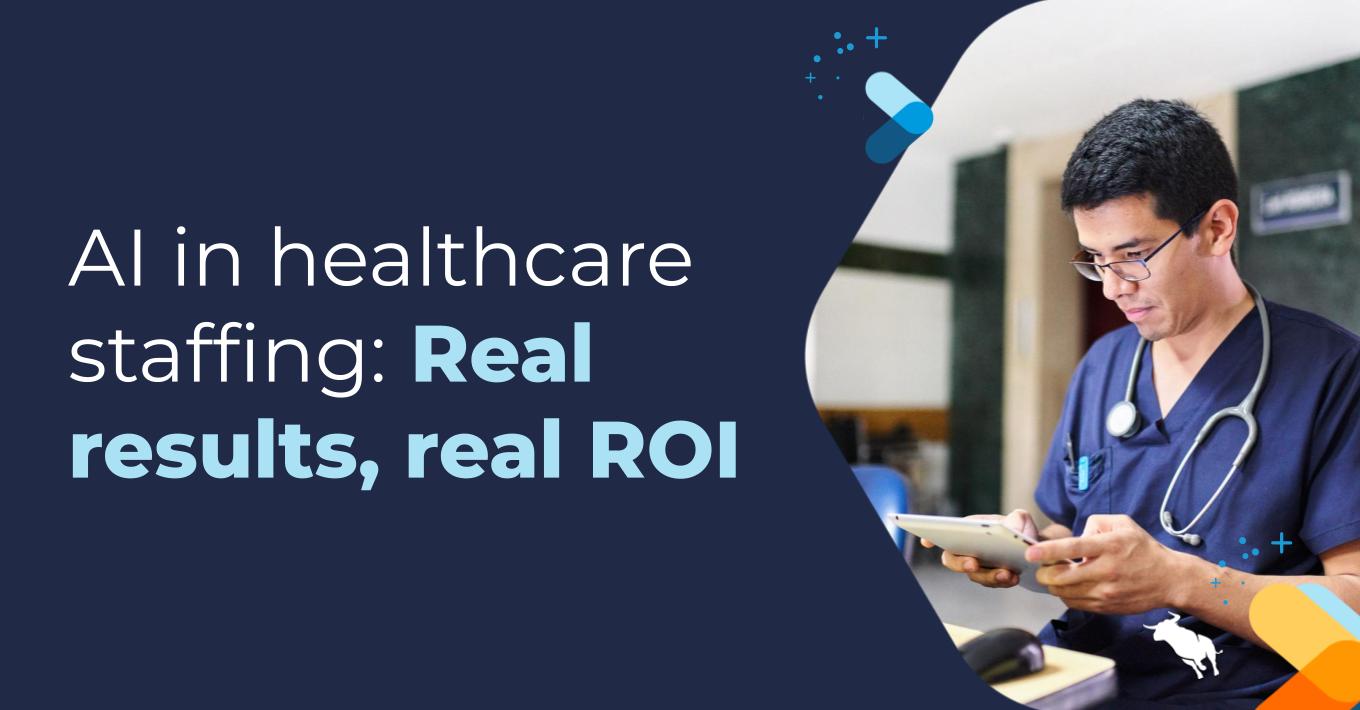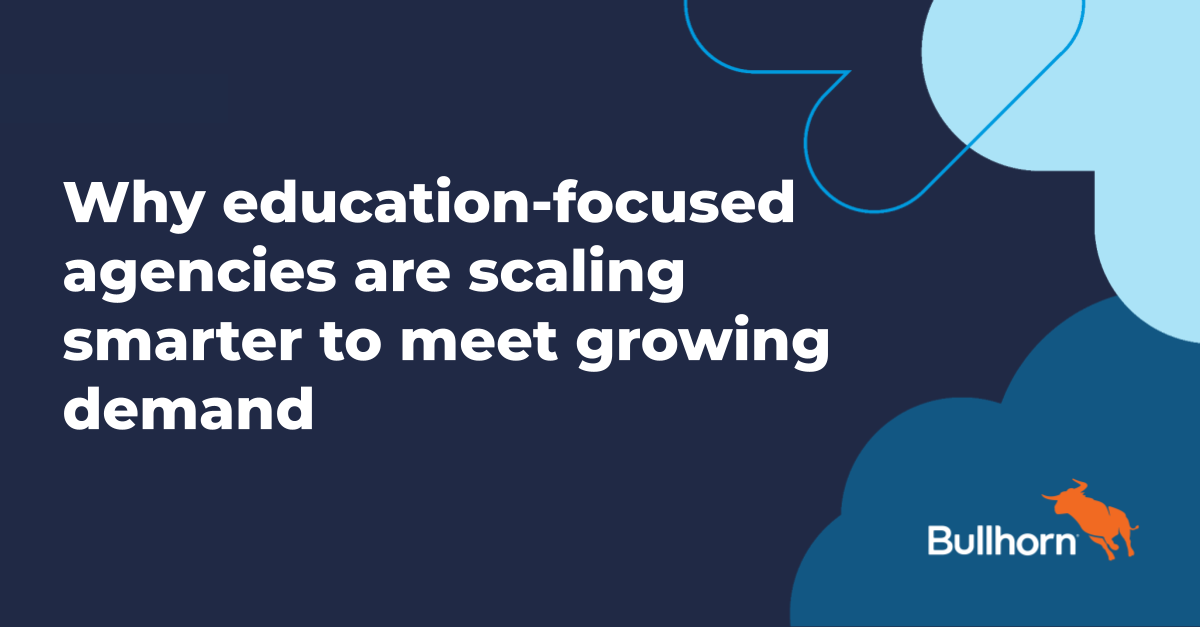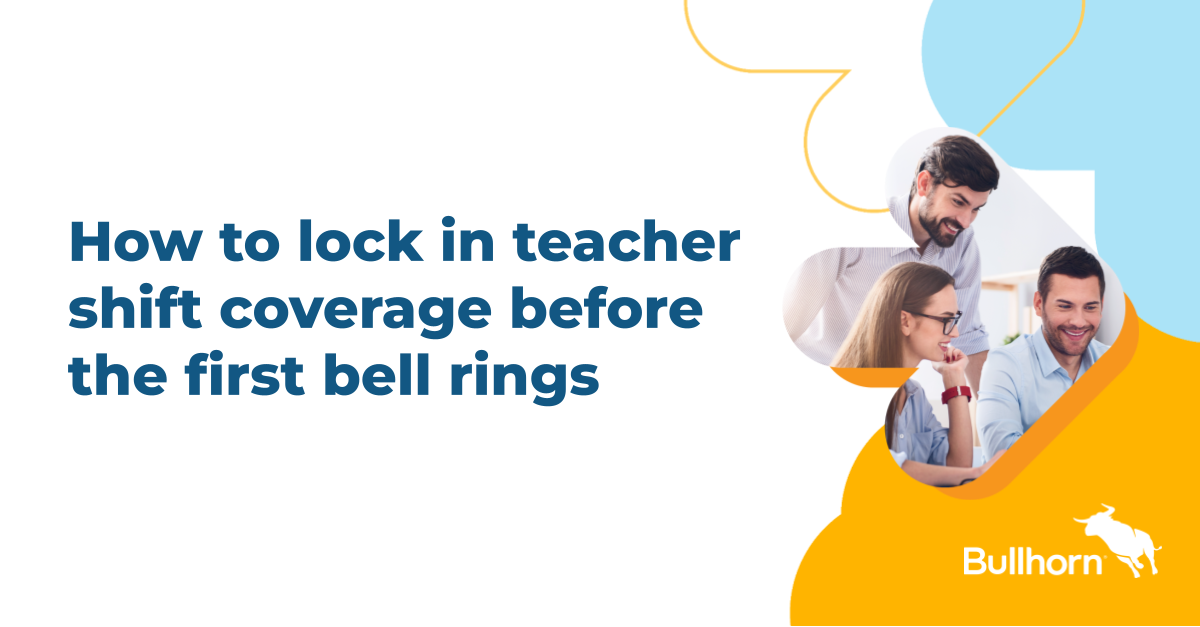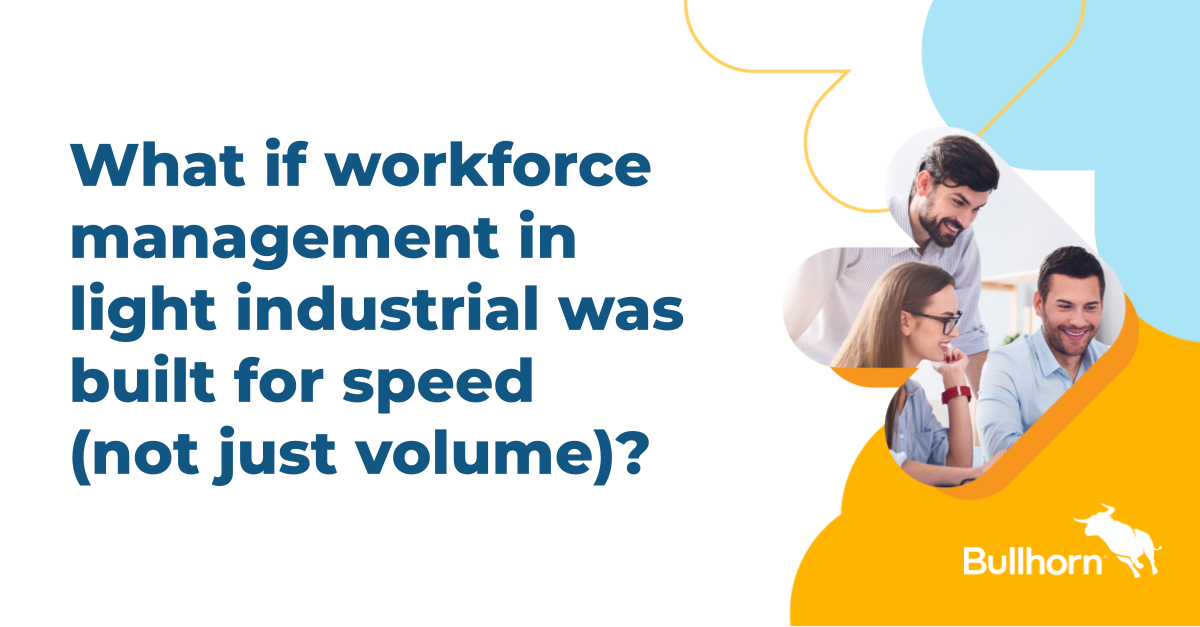Improving business performance with Connected Recruiting
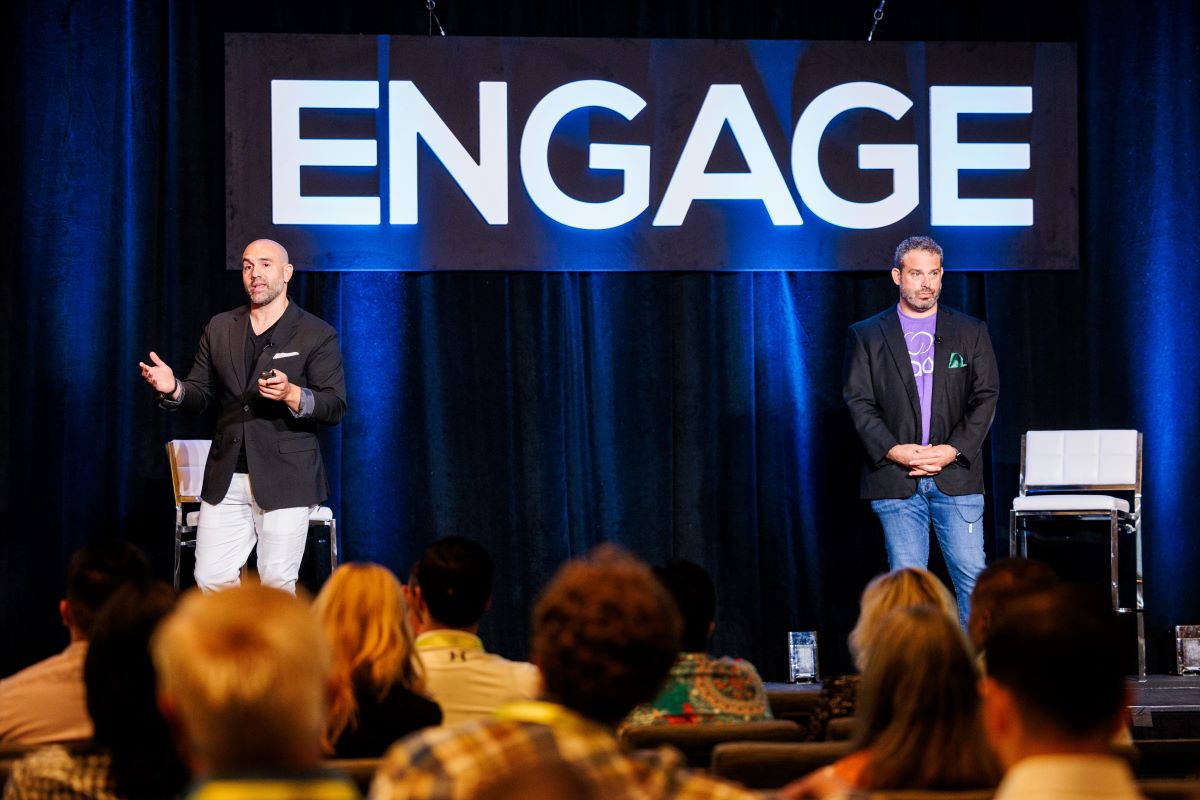
For staffing firms, business performance begins with talent experience. The world of work has changed, and to keep up in a fast-paced world, agencies need to provide a talent experience that’s fast, simple, and easy. However, it can be hard to know exactly where to start – or where your business has opportunities to grow.
At Engage Boston 2022, we introduced Connected Recruiting to help firms provide an incredible talent experience. This year, Bullhorn’s Andre Mileti sat down with TalentLaunch’s Aaron Grossman to link the Connected Recruiting journey to key touchpoints and metrics.
To better understand how you can use these insights to improve the performance of your business, check out a recap of their conversation below – or check out our Engage Content Hub for more insights.
The consumerization of employment
As a result of digital transformation, the value systems of talent have changed. Where candidates once wanted stability, they now value the same speed and flexibility they experience in all walks of life. Staffing firms are no longer only competing with one another; they’re competing with Amazon, Google, and every other digital consumer-grade experience your talent has in all avenues of their lives. Given that work is now a commodity, Mileti calls this phenomenon the consumerization of employment.
As a result of this shift, talent is abandoning job opportunities at the same rate they abandon shopping carts online. According to the 2022 GRID Talent Trends Report, a survey of over 4,000 temporary workers worldwide, 66% of talent abandoned a promising opportunity because the process took too long. Additionally, only 8% of those surveyed cited positive recruiter interaction as the reason they chose to work with an agency.
The data is clear: recruiter interaction is only one piece of the puzzle. “We think we matter so much to the experience, and the reality is that people want jobs as quickly and efficiently as possible,” said Grossman. “The more we realize that experience with a recruiter is only part of it, the faster we can all work to digitally transform the business to create better experiences for our candidates.”
The flywheel model
While staffing firms may have to compete with the consumer-grade experiences provided by businesses in other industries, there’s also plenty to learn from these leading organizations. When an industry goes through a digital transformation, certain core services lose value, and traditional channels falter. The organizations that thrive in this shift lean on insights to inform changes to business processes to improve performance.
The core principle of a flywheel is to create small wins for your business that eventually gain momentum to create velocity within your business where growth happens for itself. Mileti used Amazon as an example of an organization that uses a flywheel model to create an seamless customer experience. If Amazon were to run a staffing firm, said Mileti, they’d be focused on delivering an incredible talent experience; after all, said Mileti, “delivering on those key touchpoints and delivering happy candidates drives positive business outcomes.”
When talent has a great experience with you, they become referrals, which drives more leads and continued sustainable growth. And by having a well-populated talent pool, firms are better able to meet current client demands and win new business against the competition.
Building a flywheel approach requires reliance on data, cross-functional efforts, and, of course, time. When TalentLaunch acquired several new firms and implemented a flywheel approach, it required collaboration between their teams: marketing, technology, operations, learning and development, and more. They also built a team specifically dedicated to building out analytics, gaining insights from them, and driving them into their field so that they could make informed decisions around their talent experience.
The Moments and Metrics That Matter
When it comes to building a flywheel, there are key touchpoints that drive the cycle and create momentum. What are those pivotal moments in the talent experience – and how can staffing firms optimize them to drive growth?
Bullhorn introduced Connected Recruiting last year to help firms leverage digital tools to create a seamless talent experience. To do so requires a clear understanding of the talent lifecycle, broken down into the Moments That Matter, where firms can make a real difference in improving the recruitment journey. These include:
- New lead engagement
- Primary qualification
- Interview experience
- Silver medalist matching
- Onboarding tasks
- Day one prep
- Time & expense experience
- Next job matching
- NPS surveys
- Review, referral, and redeployment campaigns
However, understanding and delivering on these touchpoints isn’t enough. Firms need to be able to measure their progress so they know where they’re succeeding and where they can improve. To help, we’ve correlated the Moments That Matter with Metrics That Matter, including:
- New leads added
- Conversion %: lead to applicant
- % leads submitted to jobs
- New candidate utilization rate
- Conversion %: lead to employee
- Submission to placement rate
- Redeployment rate
- Database utilization rate
Measuring and understanding these metrics – and how they correlate to those key touchpoints – can help to pinpoint areas of opportunity where your business can improve performance.
Mileti provided an example: let’s say your conversion percentage of lead to qualified candidates is 40%, but you’d like to increase it to 60%. You have the metric; look at the moment tied to that metric and understand how you can improve that experience. “If you want to improve a number, get curious,” Mileti said. “Look at the moments that are tied to it and start analyzing those areas that you can improve.”
In this example, maybe too much time is passing between when talent applies to when they’re interviewed, which calls for updates to real-time alerts or even providing a way for candidates to self-schedule an interview. The changes aren’t massive tech stack re-platforming, said Mileti. “We go right to those Moments That Matter, and we make those changes to people, process, and technology.”
Connected Recruiting in practice
Amid the global pandemic and the resulting talent shortage, TalentLaunch realized they needed a new approach. They needed help finding enough people to fill their open jobs, even as they increased the number of candidates they interviewed each week and spent more on candidate acquisition. After digging into the data and building out reporting around their talent funnel, they identified the bottleneck. The issue wasn’t in a lack of talent; the team struggled to properly utilize their database and fill jobs.
After identifying the metrics they wanted to improve – time to fill and placement rate – Grossman and his team focused on the corresponding moment. Grossman and his team built a new job management process supported by automation and business intelligence. “The automation allowed us to look at submittals, placements made, and the length of time a job was open, so we could automatically close out orders that just weren’t getting worked on,” Grossman said. “What resulted was a focus on job order matching, which was much more efficient and effective. That created a drastic change in the orders that we were filling.”
After making these changes, TalentLaunch saw the following improvements:
- 9% increase in database utilization
- 50% increase in engagement open rates
- 130% increase in class A candidate placements
- 50% reduction in open jobs
- 8% reduction in candidate acquisition costs
“This is what Connected Recruiting is designed to deliver,” said Mileti. By using the flywheel principles of Connected Recruiting, linking business insights to the Metrics and Moments That Matter, and making the necessary changes in people, process, and technology, TalentLaunch was able to transform a problem into an opportunity for growth.
“Metrics need to be a daily driver of your business,” Mileti added, “and Connected Recruiting is the map to help you make changes to improve your performance.”
Dive deeper into the Moments and Metrics That Matter in our Connected Recruiting Navigator.




